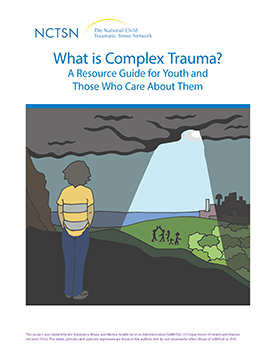
What Is Complex Trauma: A Resource Guide for Youth and Those Who Care About Them
Offers information about complex trauma, how it can impact youth, both good and harmful coping strategies, and ways to improve.
The National Child Traumatic Stress Network has developed a variety of resources for children, youth, and young adults, to explain child trauma and its effects. These tip sheets, guides, and videos are designed with input from youth themselves, to help make sense of thoughts, feelings, and behaviors and to provide support and encouragement to grow and heal.

Offers information about complex trauma, how it can impact youth, both good and harmful coping strategies, and ways to improve.
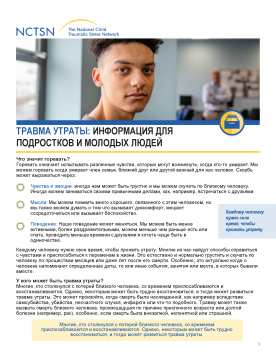
Offers information for youth to help them understand the differences between grief and traumatic grief, the signs and symptoms of traumatic grief in children and youth, and what to do to feel better. Translated 2022.
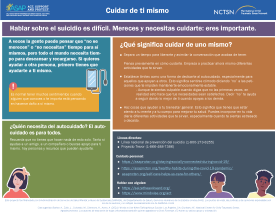
Cuidar de uno mismo: ofrece información para ayudar a los jóvenes a cuidarse a sí mismos. Esta hoja informativa incluye información sobre lo que significa cuidarse uno mismo, además de recomendaciones de líneas directas de ayuda y temas para estimular la conversación.
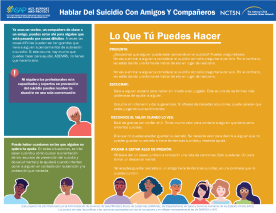
Cómo hablar del suicidio con amigos: ofrece información de respaldo para jóvenes que conversan sobre suicidio con amigos y pares.
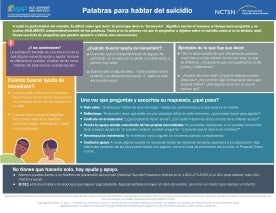
Con qué palabras hablar del suicidio: ofrece información para ayudar a los jóvenes a saber qué vocabulario usar cuando hable del suicidio con amigos y pares. Esta hoja informativa incluye detalles sobre cuándo se debe preguntar, ejemplos de qué decir, cuándo buscar ayuda y qué hacer después.
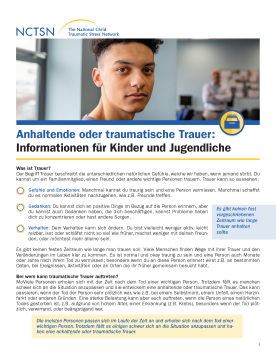
Offers information for youth to help them understand the differences between grief and traumatic grief, the signs and symptoms of traumatic grief in children and youth, and what to do to feel better. Translated 2022.
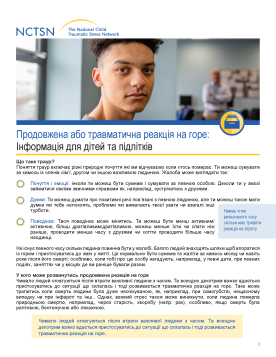
Offers information for youth to help them understand the differences between grief and traumatic grief, the signs and symptoms of traumatic grief in children and youth, and what to do to feel better. Translated 2022.
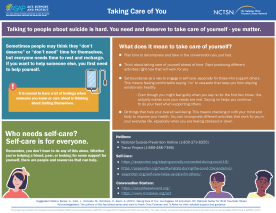
Provides information to help youth practice self-care. This fact sheet includes information on what it means to take care of yourself, as well as recommended hotlines and conversation starters. This resource is most helpful for youth ages 12 and older.
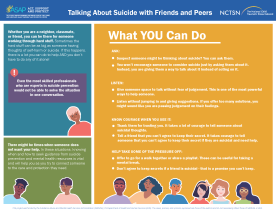
Provides information to support youth talking about suicide with friends and peers. This fact sheet includes what you can do, action words, skills for getting help, as well as myths and facts about how to help as a peer. This resource is most helpful for youth ages 12 and older.

Provides information to help youth know what words to use when talking about suicide with friends and peers. This fact sheet includes when you should ask, examples of what to say, when to get help, as well as next steps. This resource is most helpful for youth ages 12 and older.
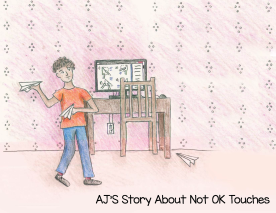
Is designed to be read by a supportive adult (parent/caregiver, therapist) to a child (ages 5-10, or as developmentally appropriate) who has engaged in a Not OK touch or problematic sexual behaviors with another child.
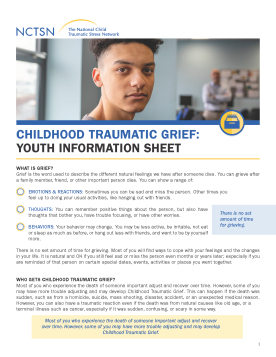
Offers information for youth to help them understand the differences between grief and traumatic grief, the signs and symptoms of traumatic grief in children and youth, and what to do to feel better.